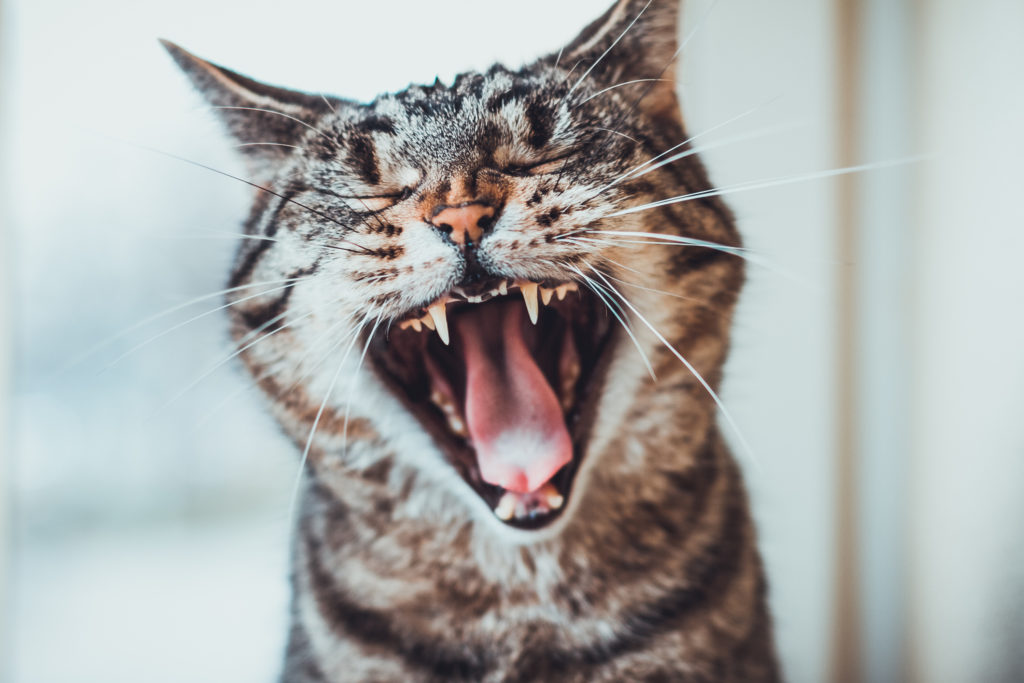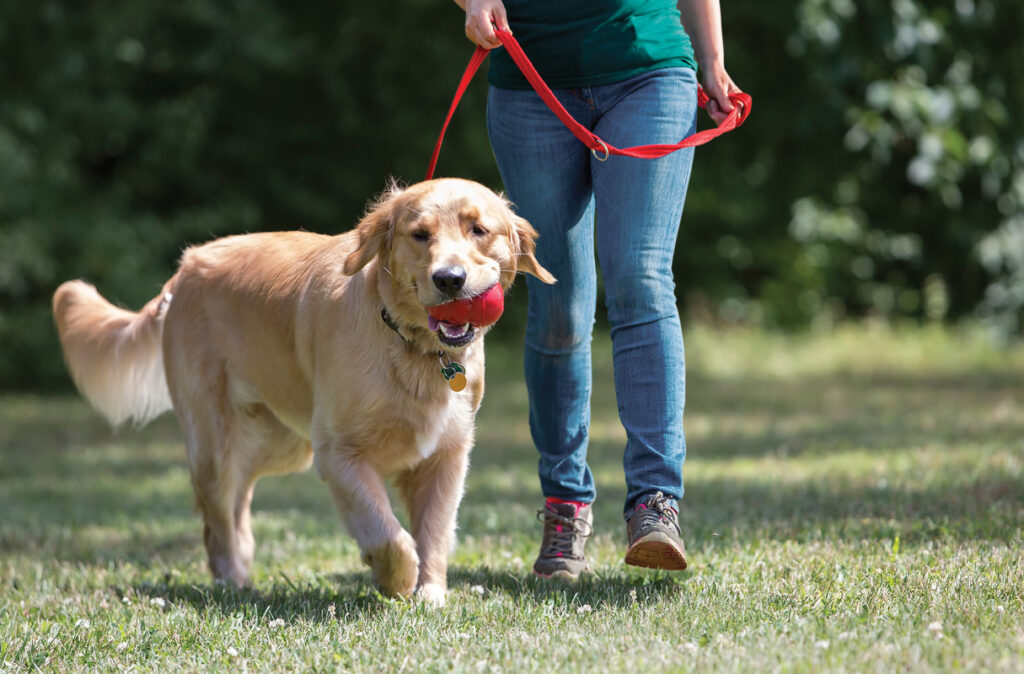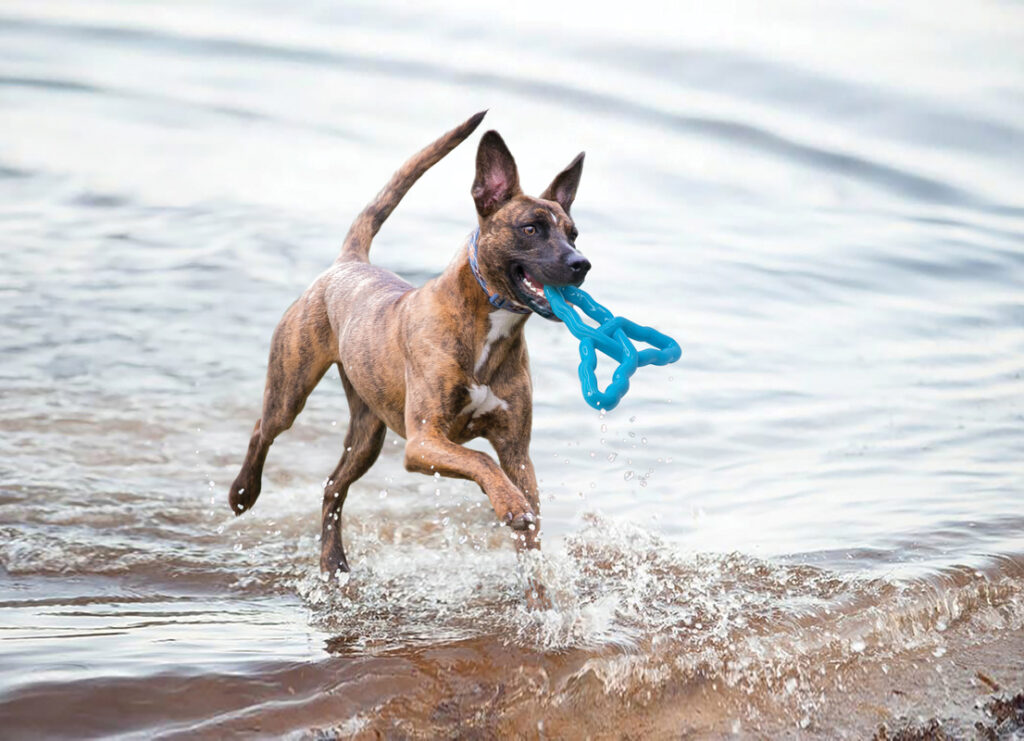Calling our friends “Queen” has become a popular term of endearment, but did you know that intact female cats of reproducing age are called Queens in the veterinary and medical world?
A cat in heat can be an interesting experience if you are trying to prevent any tiny meowing bundles from making an appearance.
Let’s chat about the signs of your cat going into heat and how you can help your cat through this time.
When Do Female Cats Go Into Heat?
Just like human children, our fur-children can grow within the blink of an eye.
The average age of a cat’s first heat cycle is six to seven months but can be as early as four months. Even though your cat may be biologically ready for kittens, it is not advised to allow mating behavior before full skeletal and emotional maturity, which is closer to 18-24 months of age.
Cats can be prolific reproducers. Female cats go into heat, also called the oestrus or estrus cycle, twice a year, usually during the spring and the fall.
With kitten gestation being around two months, a queen can have up to three litters a year. An unspayed cat can have up to 100 kittens over the course of her life. That is a lot of catnip!
Signs Of Your Cat Being In Heat
If you are a new cat parent, you may sense that your cat is acting a bit differently. Some new cat parents may even think that their cat is in pain or not feeling well due to strange behavioral changes, like loud yowling.
If you see your unspayed female cat exhibiting some of these symptoms, she may have entered her heat cycle:
Increased Signs of Affection
Your cat may be starting to enter her heat cycle if you see that your cat is acting more lovey-dovey than usual to you or even inanimate objects.
Increased Vocalizations
Noises such as loud yowling and meowing could be a sign of heat. This symptom may cause pet parents to perk up and think that their kitty is not feeling well or injured. It could be your female cat making herself known to potential mates that she is in her breeding season.
However, if you have concerns, it’s always best to ask your veterinarian.
Spraying Urine
When in heat, your female cat will leave a calling card that she is ready to mate. Spraying marks territory and helps male cats know that she is in heat. During this time, her urine will contain increased levels of estrogen and pheromones related to a cat’s heat cycle.
Different Posture
Your cat may start sitting with her hindquarters in the air, with her tail to the side. She may also make a marching motion with her feet. Basically, your queen is getting ready to make kittens by getting in a mating position.
Loss of Appetite
Your normally hungry kitty may not have the same interest in her cat food because her mind is elsewhere looking for a cat mate. You can try to tempt your queen with her favorite tidbits, but her normal appetite should come back after her ovulation is done and she leaves her estrous cycle.
Sneaking Out After Curfew and Hanging Around Tomcats
If your kitty is trying to slip past you when opening the door or eyeing an open window, they are trying to make their escape to get out and mingle with other cats.
While this isn’t an explicit symptom your cat may experience, you may see tomcats hanging around your home. They’ll sense that your female cat is in heat and will try to hang around to catch a glimpse of her.
What Are the Signs a Cat Is Pregnant?
The classic symptoms of heat will continue for around a week. If your cat doesn’t mate, she’ll come back into heat around two to three weeks later. If she did mate, look for symptoms of a cat pregnancy.
Symptoms might include a swollen belly, protruding nipples, increased appetite, and resting. If you know your cat has bred with multiple other cats during this time, there is a possibility that the kittens in the litter can have different fathers (yes, this is possible).
What Are the Signs of a Feline False Pregnancy?
Visit your veterinarian for confirmation of pregnancy, as some cats can exhibit all the signs but have a false pregnancy. False pregnancies are uncommon and resolve on their own. Ask your veterinarian to confirm a pregnancy, so you know exactly what to be doing to help your potential mama-to-be.
Your veterinarian will also be able to give you pertinent information on the signs of labor and what to watch for when your cat gives birth.
Why Is Spaying Important?
Female cats who do not conceive during their heat cycle will enter another heat cycle in two to three weeks. Going through multiple heat cycles increases your cat’s chances of getting pregnant, especially if she were to escape from your home. All it takes is one encounter with a male cat, and you will likely have a litter of kittens.
With the added stress of ensuring that your home is secure and enduring loud yowls and the risk of urine spraying, it’s easy to say that it can be a paw-full having an unspayed female cat in the home. If you are not planning on breeding your female cat, the best course of action is to spay your female cat.
When you spay your female cat, you eliminate the risk of unwanted pregnancies and rehoming multiple kittens. With animal shelters already being overpopulated, it’s important to do what we can to prevent adding to the overall cat population.
You are also ensuring that your female cat is protected from health risks. Intact female cats are at risk of a condition called pyometra, which can be a fatal infection of the reproductive organs.
Additionally, if you spay your cat while she is still young and before her first heat, between three to six months of age, her mammary glands have not developed. Spaying during this interval may lower the risk of mammary cancer.
Having your cat spayed is a quick, routine procedure that your cat will bounce back from with a little rest and relaxation. You’ll feel the relief of not having to go through all the precautionary measures of keeping your cat inside and away from other cats while she is in heat. You’ll also appreciate the peace of mind of lowering the risk of potential health issues later in your cat’s life.
Treat Your Queen Like Royalty
If your female cat does go into heat, you will likely be extra vigilant in keeping her away from doors and windows. Helping your indoor cat focus her attention on other things than the call of nature can help make this period smoother for everyone in the household.
Keeping your queen distracted and happy is an easy solution when you are a member of the KONG Club. Your care coach can help come up with a plan to keep your cat busy while staying indoors.
Let KONG take care of keeping your pets engaged and occupied, so you can take care of treating your cat like the queen she is!
Sources:
Is your cat in heat? | FACE Low-Cost Care Clinic
Spaying and Neutering | Cornell University College of Veterinary Medicine
Pyometra: What is it and Why Does it Happen? | MSPCA-Angell
Reproductive Disorders of Female Cats – Cat Owners | Merck Veterinary Manual



